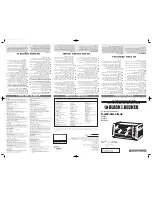
20
7.3
Operation
1.
After having reached of heating water temperature, modify the combustion air supply. Power regulation is performed with help of the
throttle valve on the stocking door, by which air supply is regulated above fuel with help of the draught regulator or by the set screw of the
proper throttle valve. The draught regulator has to be adjusted so that the throttle valve, in a moment when the required temperature of
heating water, was throttled to 8 to 10 mm.
2.
Depending on the needs in heat and burning intensity, it is necessary to repeatedly add fuel during boiler operation. Add fuel on the
glowing layer with a thickness of about 15 cm. Before the next stocking, make manual grating of combustion wood from up through the
stocking door. We recommend you to stock approximately 10 - 15 cm under the upper part of the stocking chamber. Before adding fuel,
release the orifice of the hole in the bottom part of the combustion chamber lining so that it was possible to smoothly burning of fuel.
3.
The ash-pan door has to be permanently closed during operation.
4.
The control of the shorting shutter during boiler operation at the nominal power (exclusive of kindling and fuel stocking) has to be in
position
A
according to Fig. 22 and Fig. 23.
5.
Where necessary, empty ash-pan (it is necessary to use gloves).
6.
In the case of using of the shut-off valve, it is necessary to mount a safety valve between the boiler and shut-off valve.
7.
We recommend that you clean up the filter after having performed a heating test and consequently before beginning of the heating
season.
8.
Flue gases are colle
cted in the stocking chamber during combustion. That's why don’t open the stocking door during combustion and
before stocking the next combustion wood wait till just a glowing layer remains in the stocking chamber, which only creates minimum
quantity of smoke.
8
Maintenance
1.
Check and if necessary remove ash from the ash-pan. All fuel remnants in the heating chamber and in the combustion output hole in the
lining before each new kindling. Ash has to be put in non-flammable vessels with a cover.
Use protective equipment while working
and
be particular about personal safety.
2.
With using a brush, once a month clean up walls inside the heating chamber, boiler flues, and chimney pot (cooled boiler, when its
temperature does not exceed 40
°
C). A cleaning cover in the bottom part of the chimney pot serves for the removal ash from it. To demount
the cleaning cover, push and slightly rotate the screw in its bottom part.
After having cleaned-up the chimney pot, mount back the
cleaning cover and be particular about its thorough tightness.
3.
As far as during the use of fuels with higher generation of gas, a tar deposit is sedimented on the walls of the combustion space, remove it
by a scraper or with help of burning with help of dry hardwood which operating the boiler at the maximum operational temperature.
4.
After having finished the heating season, clean up the space behind the throttle valve of tertiary air supply (the hole in the rear part of the
boiler, pos. No 2 in Fig. No. 24, treat pivots of the shorting shutter and all doors.
5.
Cracks caused by tensioning or light corrosion of the fire-resistant lining are caused by thermal fluctuations and temperature above 1000
°C in the combustion chamber. But what is decisive for the functionality of the device is shape stability of the structural parts. Cracks do not
affect functionality and they can be considered, the same as in case of tiled stove, to be normal. If incorrect manipulation
from the user’s
party causes small mechanical damage of any part of the lining, then its repair is only allowed to perform after its cooling-down. Carry out
repair with help of a suitable heat-resistant glue determined for these purposes.
6.
In the case of impurities on covering parts and control elements, remove them with a soft wet cloth. We recommend slight cleaning agents
without dissolution reagents. Dissolution reagents such as alcohol, petrol or solvents cannot be used because they can damage the device
surface.
9
Use of turbulators
In case of higher chimney draught, we recommend - to ensure more intensive and effective heat-exchange to the combustion heat-exchanger -
that you use original turbulators of the U22 Economy boiler. Turbulators are to be placed into the output passages of the combustion heat-
exchanger. Their use is not suitable in places where the chimney is not resistant against flue-gas condensate. The turbulators are not part of the
basic equipment of the boiler, but they might be whenever additionally installed.
Fig. №. 26 Placement of turbulators in the boiler
1.
Turbulators
depending on the
boiler size
Summary of Contents for U22 Economy 16
Page 32: ...32 16 Information specified on the name plate ...
Page 34: ...34 ...
Page 37: ...37 ...
Page 38: ...38 ...
Page 39: ......
















































